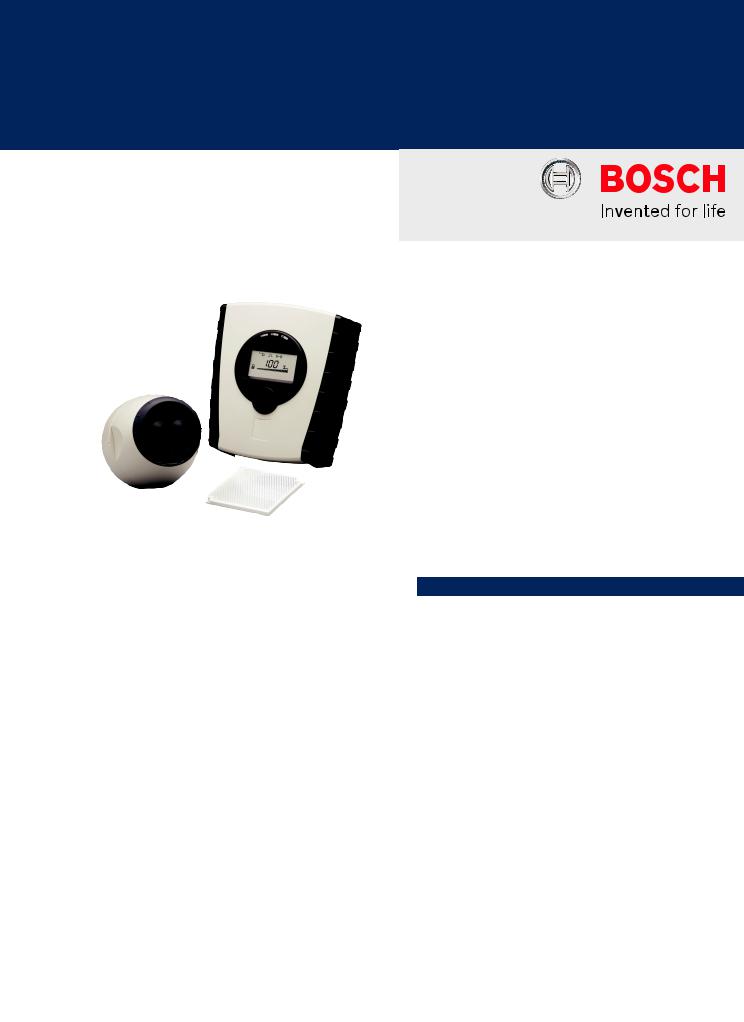Bosch FIRERAY5000-UL Specsheet

Fire Alarm Systems | FIRERAY 5000-UL Reflective Beam Smoke Detector
FIRERAY 5000-UL Reflective Beam Smoke
Detector
www.boschsecurity.com
The Fireray5000 UL Linear Smoke Detector covers distances between 26.25 ft and 330 ft (8 m and 100 m). A reflective prism allows for the accurate
detection of smoke particles within the given distance range.
For ranges between 26.25 ft and 164 ft (8 m and 50 m), one prism is sufficient. For ranges between 164 ft and 330 ft (50 m and 100 m), four prisms are required. The additional prisms are included in the FRay5000 LR Kit Long Range Kit.
Key application areas are large halls such as historical buildings, churches, museums, shopping centers, factory halls, warehouses, etc.
The Fireray5000 UL Linear Smoke Detector is suitable for use in areas where point-type detectors are not effective
The Fireray5000-UL Linear Smoke Detector can be upgraded with one additional FRAY5000-HEAD-
UL Detector Head. The system controller can control two detectors. Each head can be programmed separately.
uExtended monitoring range
uUp to 2 detectors per system controller
uTwo pairs of fire and fault relays (one per detector)
uTransmitter and receiver integrated into a compact housing
uIntegral LASER alignment
Functions
The transmitter emits an invisible infrared light beam (850 nm) that is focused through a lens. The light beam is reflected by the prism mounted opposite and returned to the transmitter/receiver combination.
If the IR beam is obscured by smoke and the signal received drops below the selected threshold (standard 10 s, adjustable), the detector triggers a fire alarm and the alarm relay closes.
The sensitivity can be adjusted according to the environmental conditions. The default settings of 25% (sensitive), 35% and 50% (non-sensitive) can be changed in steps of 1%. Each detector can be adjusted individually. The standard setting is 35%.
The alarm relay can be set to auto-reset or latched mode.
The LEDs indicate three different operating states:
•Alarm
•Fault
•Operation
You can control and set all parameters via the system controller and LCD display for each detector head.

2 | FIRERAY 5000-UL Reflective Beam Smoke Detector
Slow changes in the operating states (e. g. component aging, optics contamination, etc.) do not cause false alarms, but are compensated by the automatic gain control. Every 15 minutes, the system state is compared with a default reference value and in the case of a deviation, is corrected automatically
to 0.17 dB/h. If the compensation limit is reached, "Fault" the fault signal is indicated.
If the IR beam is obscured within 2 s and the obscuration is more than 87% and lasts for 10 seconds and above (operator changeable), the fault relay switches. Faults may be caused by an obstacle in the beam path, by the covering of the reflector, etc. As soon as the fault cause is removed, the fault relay is cleared and after 5 s, the detector is automatically reset to standard operation. The fire panel must be reset separately.
The system has an alarm output, which is a relay with a potential free change-over contact.
Certifications and approvals
Region |
Certification |
|
|
|
|
USA |
UL |
UROX.S3417 Fireray5000-UL |
|
FM |
3037125 Fireray5000-UL |
|
CSFM |
7260-1508:0104 Fireray5000-UL |
|
NYC- |
22-08-E Fireray5000-UL |
|
MEA |
|
|
MSFM |
2243 Fireray5000-UL |
Canada |
ULC |
UROXC.S3417 Fireray5000-UL |
|
|
|
Installation/configuration notes
•For connection to FPA-1000 and any UL-listed 24V control panel.
•The line of sight between the detector and the reflector always has to be clear and may not be interfered by moving objects (e. g. overhead crane).
•Heat accumulation under the roof may prevent smoke from rising up to the ceiling. Thus, the detector must be mounted below the expected heat accumulation.
Accordingly, the benchmark values for X1 specified in the table have to be exceeded.
•The mounting surface for the detector must be firm and vibration-free. Metal supports that may be affected by heat or cold are unsuitable for the installation.
•The detector and the reflector are usually installed at the same height and aligned with one another. The wide angle of the IR beam allows for an easy adjustment and for a reliable long-term stability.
•The detector must be mounted in a position where the detector’s optical system is not exposed to direct sunlight or artificial light. Normal ambient light has no influence on the IR beam and the analysis.
Installation for smoke plume
Pos. Description
A |
Ceiling |
|
|
B |
|
|
|
C |
Heat accumulation |
|
|
D |
IR beam |
|
|
•Since the smoke from a fire does not simply rise straight up, but rather spreads like a mushroom cloud (depending on air current and accumulation), the monitoring range is much greater than the diameter of the IR beam.
•The lateral detection on either side of the beam is 24.6 ft (7.5 m).
•Country-specific Standards and guidelines on planning must be observed.
Detector arrangement
The detectors must be arranged according to the following distances:
X1 |
Distance from the ceiling |
1 ft to 2 ft (0.3 m to |
|
|
0.6 m) |
X2 |
Horizontal distance detector/wall |
min. 1.6 ft (0.5 m) |
X3 Horizontal distance between two detectors under gable roofs
Example: Gable roof, 10° roof pitch X3 = 30 ft + (30 ft x 10%)
X3 = 30 ft + 3 ft
X3 = 33 ft
Positioning the detectors on flat ceilings
60 FT (18.25 M) |
1.6 FT (0.5 M) < X2 < 30 FT (9.1 M) |
|
|
|
30 FT |
30 FT |
X2 |
60 FT (18.25 M) |
60 FT (18.25 M) |
|
|
|||
(9.1 M) |
(9.1 M) |
|
|
|
|
|
X1 |
|
|
|
|
1 FT (0.3 M) |
|
|
|
|
< X1 < |
|
|
|
|
2 FT (0.6 M) |
|
|
